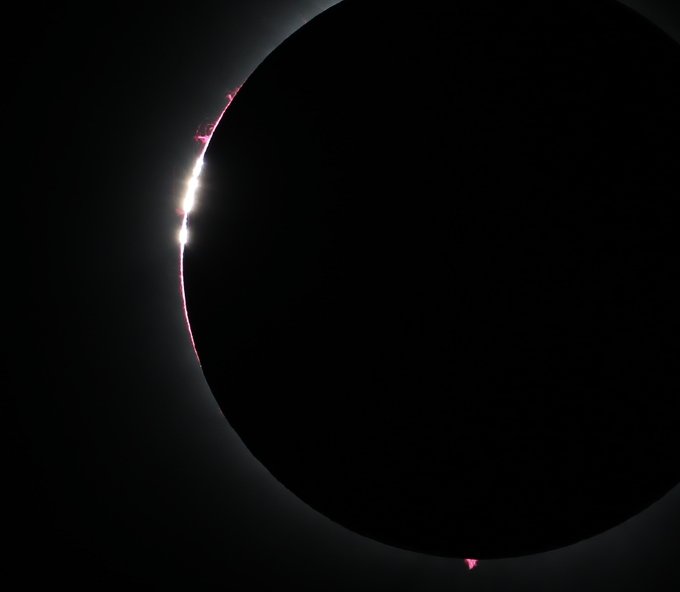We’re keeping an eye on space news on the web so you don’t have to wade through it all. Here is our round-up of the most important, and interesting, space news stories of April (note that space orders is on another post):
Future Human Spaceflight
![]() Blue Origin plots a return to suborbital flight for its New Shepard. A Japanese astronaut will land on Moon, courtesy of the NASA Artemis programme, after JAXA agrees to build a pressurised lunar rover…but while the Artemis project continues to suffer delays, China lays out its plan for a human landing in 2030. Other hopeful astronauts include Tim Peake, who may get a chance to return to the ISS via Axiom.
Blue Origin plots a return to suborbital flight for its New Shepard. A Japanese astronaut will land on Moon, courtesy of the NASA Artemis programme, after JAXA agrees to build a pressurised lunar rover…but while the Artemis project continues to suffer delays, China lays out its plan for a human landing in 2030. Other hopeful astronauts include Tim Peake, who may get a chance to return to the ISS via Axiom.
More confidence for Starlab: Japan’s Mitsubishi takes stake in the US Voyager/Airbus DS Starlab space station. Meanwhile, Haven-1, a small space station being developed by Vast will get broadband communications through the SpaceX Starlink system.
Space Technology and Exploration:
![]() NASA to set new Coordinated Lunar Time (LTC) standard for lunar operations as gravitational/relativistic effects slows time on Moon compared to Earth’s Coordinated Universal Time (UTC) and its equivalent Greenwich Mean Time (GMT/Zulu). The US space agency approves Dragonfly UAV mission to Titan despite its growing costs.
NASA to set new Coordinated Lunar Time (LTC) standard for lunar operations as gravitational/relativistic effects slows time on Moon compared to Earth’s Coordinated Universal Time (UTC) and its equivalent Greenwich Mean Time (GMT/Zulu). The US space agency approves Dragonfly UAV mission to Titan despite its growing costs.
Lockheed Martin invests in nuclear fusion engines firm Helicity Space. DARPA awards a contract to Phase Four for RF-energised thin-air drag-countering thruster research. Elon Musk has revealed plans for future Starship versions doubling reusable cargo capacity and Rocket Lab reuses a first stage for the first time.
Japan commits to building and launching its OHISAMA power generation and transmission spacecraft
Space Diplomacy and Defence
![]() Adding to the suspicion that it might be developing a nuclear beam weapon in space, Russia vetoes UN move to stop nuclear weapons in space, meanwhile a new report identifies nations with defensive and offensive capabilities in space including jamming and directed energy beams. Russia is also accused of jamming GPS navsat signals from its enclaves hindering international civil aircraft navigation
Adding to the suspicion that it might be developing a nuclear beam weapon in space, Russia vetoes UN move to stop nuclear weapons in space, meanwhile a new report identifies nations with defensive and offensive capabilities in space including jamming and directed energy beams. Russia is also accused of jamming GPS navsat signals from its enclaves hindering international civil aircraft navigation
The US Space Command seeks allies for its space tracking and defence effort Operation Olympic Defender and the US military sign a US$414 million contract for eight hypersonic missile tracking satellites for the FOO-Fighter constellation from the Boeing subsidiary Millennium Space Systems.
China makes information mission a distinct force in the reorganisation of its armed forces.
Companies/Money
![]() Telesat receives CAN$2.1 billion loan offer from Canadian government to develop its Lightspeed constellation. Varda Space Industries raises US$90 million for its pharma manufacturing in space but endures wrath of FAA for re-entering and landing without a licence. Finnish radar satellite operator IceEye raises US$93 million in latest funding round while Japanese firm Ispace raises US$53.5 million in a stock sale and another US$45 million as a loan.
Telesat receives CAN$2.1 billion loan offer from Canadian government to develop its Lightspeed constellation. Varda Space Industries raises US$90 million for its pharma manufacturing in space but endures wrath of FAA for re-entering and landing without a licence. Finnish radar satellite operator IceEye raises US$93 million in latest funding round while Japanese firm Ispace raises US$53.5 million in a stock sale and another US$45 million as a loan.
True Anomaly cuts its workforce and AST SpaceMobile‘s stock price sinks after it confirms delays to its constellation. Payload Research publishes a great analysis of start-up launch companies and what they need in funding. Paris-based space consultancy Euroconsult marries up with TecSpace management consultants to form Novaspace.
Space Law and Regulation
![]() The UK launch site Saxaford has been granted a Range Control Licence by the Civil Aviation Authority (CAA). Meanwhile, SpaceX is denied more spectrum by the FCC and Iran moans about its Starlink incursions.
The UK launch site Saxaford has been granted a Range Control Licence by the Civil Aviation Authority (CAA). Meanwhile, SpaceX is denied more spectrum by the FCC and Iran moans about its Starlink incursions.
Virgin Galactic countersues Boeing over failed carrier aircraft project.
Space Debris and Mitigation
![]() Astroscale’s ADRAS-J spacecraft rendezvoused with an old rocket body while ClearSpace-1 gets a change of deorbit target
Astroscale’s ADRAS-J spacecraft rendezvoused with an old rocket body while ClearSpace-1 gets a change of deorbit target
Space rescues
![]() Communications with NASA’s extreme distance spacecraft Voyager 1 has been saved by a software fix. Meanwhile, China is doing its best to recover its stranded DRO-A and -B lunar spacecraft to at least some use.
Communications with NASA’s extreme distance spacecraft Voyager 1 has been saved by a software fix. Meanwhile, China is doing its best to recover its stranded DRO-A and -B lunar spacecraft to at least some use.
Image of the month

Credit: Stephen Clark
@StephenClark1 via X (formerly Twitter)
Solar eclipse wows Mexico, USA and Canada, as lunar shadow moves on Earth
Slingshot & Seradata:
 We could not resist including the fact that we made the news after Slingshot Aerospace (with Seradata) warned of increasing congestion in orbit and of insurance market woes here and here.
We could not resist including the fact that we made the news after Slingshot Aerospace (with Seradata) warned of increasing congestion in orbit and of insurance market woes here and here.
News sources include BBC, CNBC, msn.com, NASA, Orbitaltoday, Payload, phys.org, Politico, scmp.com, SpaceNews and The Register with links provided to each story.








